Early Adventures in Chromatography: The Story of a "Recovering" Electrochemist
LCGC North America
Well-known industry veteran and LCGC EAB member Peter Carr looks back at the early days of the chromatography field and reflects on his own experiences.
I wrote my first chromatography paper in 1978, shortly after transferring from the University of Georgia to the University of Minnesota. This work (1) concerned the optimization of gradient elution by use of the Simplex algorithm popularized by Deming and Morgan (2). Before the move to Minnesota, my research had focused on biochemical applications of electroanalytical and thermoanalytical methods, especially the use of immobilized enzymes. There are many commonalities between separation science and immobilized enzymes, and it was in this context that I first became acquainted with Csaba Horvath's work. In fact, I had been unaware of his seminal role in the development of high performance liquid chromatography (HPLC).
I owe a great deal to my mentors in electroanalytical and thermoanalytical methods, including my Ph.D. advisor, Joe Jordan at Penn State University, and Steve Feldberg at Brookhaven National Laboratories, but especially Lou Meites at Brooklyn Poly (now the Polytechnic Institute of New York).
The title of this article is borrowed, with thanks, from remarks made by Peter Uden of the University of Massachusetts in his address at the Eastern Analytical Symposium (EAS) several years ago when he received the EAS Award in Chromatography. He looked over the audience and welcomed a group of "recovering electrochemists." I just know he was looking at me in particular. Actually, I took this as a compliment. I have always said that electrochemistry is great training for separations scientists, as it involves many concepts related to mass transport and phase equilibria, both being subjects in which I had been well instructed and that facilitated my transition to chemical separations.
I do recall my earliest encounters with chromatography. In my sophomore organic laboratory course, we were taught how to assemble a classical chromatography column by slurry packing a glass column about ½ in. i.d. by 12 in. long and separating some colored product from "gunk." It was great to see a colored — albeit very irregular — band move down the column. But I can't say I remotely understood what was going on. The lab focused on technique, not theory. Certainly I had never heard of terms like "HETP" and "isotherm," and knew nothing about the van Deemter equation. (I would like to think this is no longer true for many "users" of chromatography, but sadly I feel this is still too much the case. Chromatography is far too often used as a "black box.")
During my junior year, I had a course called "Advanced Analytical Chemistry," which would now be referred to as "Instrumental Analysis." We used Meites and Thomas' wonderful textbook, 70% of which was electroanalytical chemistry, 25% spectroscopy (IR, UV but no nuclear magnetic resonance [NMR], atomic absorption [AA], or mass spectrometry [MS]), with one barely intelligible chapter on chromatography in which the de Vault equation was derived. Little did I realize that this equation was utterly fundamental to chromatography.
I got a good bit deeper into the theory of column dynamics when, some years later, Steve Weber of the University of Pittsburgh asked me to help with some fine points of the de Vault equation and its consequences for nonlinear chromatography in his wonderful chapter on the dynamics of liquid chromatography in Brown and Hartwick's book on HPLC (3). However, in my undergraduate course on instrumental analysis there were no lectures on chromatography and certainly no laboratory experiments.
Instruction in this field has surely come a long way. The last time I taught a course on Instrumental Analysis for our senior undergrad chemistry majors, we spent half of the 14 weeks on gas chroamtography (GC), HPLC, and capillary zone electrophoresis (CZE). (When I hear that our undergraduate curriculum in analytical has not changed, I want to ask, "Since when—last year?") The rest of the course had a fair amount of electronics and computers, atomic spectroscopies, FT-IR, and only five or six lectures (two weeks) on electrochemistry.
My next contact with chromatography was very casual. Brooklyn Poly was housed principally in a converted razor blade factory in downtown Brooklyn. One day between classes I saw a group of graduate students in the stairwell performing a strange rite involving a narrow copper tube that ran from the eighth floor to the basement. One of them had been my instructor, so I asked him what the "bleep" they were doing. He explained that they had a difficult separation to do and so were packing a 100-foot GC column (this was clearly well before the era of fused-silica capillaries). Packing required a team of nearly a dozen. One guy stood on each floor to tap the side of the tube to keep the particles flowing and settle the bed, and two were at the top to add the diatomaceous earth and support the tube. Assuming a 100-ft column and some reasonable estimates of the height equivalent to a theoretical plate (HETP), they might have generated 10,000–12,000 plates, a trivial accomplishment by today's standards.
Other than a seminar by Cal Giddings, I had little additional exposure to chromatography in graduate school at Penn State, although one of my predecessors in Joe Jordan's laboratory had studied thermal conductivity detection in GC (principally because Jordan was interested in thermistors as temperature sensors). I also recall a grad student colleague who ran into trouble reproducing a GC separation he had done using a well-known laundry powder as the stationary phase. It turned out the detergent's manufacturer had changed the formulation, so he was never able to do the separation again.
After graduate school and a brief postdoc at Stanford Medical School, in 1969 I joined a marvelous group at the University of Georgia that included Don Leyden, Dave Hercules, and Leon Klatt, with Rudi Seitz joining a bit later. All have proven to be lifelong friends, wonderful colleagues, and mentors. I learned a great deal about many things from all of them. But not one of us knew a thing about chromatography. We tried and failed to hire Milos Novotny in the very early 1970s. Shortly after this great disappointment, "Buck" Rogers happened to be an analytical seminar speaker at Georgia. In private conversations with Buck, we all asked more or less the same question: "Who should we try and hire?" A few days later we met for our weekly lunch, looking quizzically at one another and asking "Lloyd who?" revealing a mutual, stupendous ignorance of Lloyd Snyder's already significant contributions to chromatography. At that time, Lloyd was working for Technicon, and within two years I was recommending a great student, Larry Bowers, to postdoc with Lloyd. Larry's interests in clinical chemistry pulled him toward a more academic position. In the years since, Lloyd and I have published jointly many times and frequently act as sounding boards for one another's ideas and papers. Lloyd has been a most valued collaborator and has contributed immeasurably to my work.
My real introduction to chromatography came when my Georgia colleagues and I decided that we simply had to offer a chromatography course for our graduate students — and it fell to me to develop one. After surveying the literature (and nascent state) of LC in 1972, I found Littlewoods' marvelous book on GC. I taught a basic course out of that monograph, augmenting it liberally from Dean's book on chemical separations, the chapter on separations from Laitinen's book Chemical Analysis, and a few chapters from Sidney Siggia's Introduction to Instrumental Analysis.
I had relied heavily upon Siggia's book on quantitative organic analysis as a graduate student, and he was a personal hero of mine. I still recall my first and only meeting with Siggia at a great talk he gave at Georgia. In the middle of this talk, he illustrated dramatically his emphasis on "problem solving" in analytical chemistry by telling of an industrial colleague who came to beg for his help one day. "Why," this overwrought chemist wondered, "is my catalyst dead?" What struck Siggia was that he, an analytical chemist, was being viewed as a team member and problem solver rather than as a technician who merely responds to the demand "How much XYZ is in this sample?" To some extent, he eschewed academic analytical research that is often purely "theoretical." Instead, Siggia's approach was very much in the tradition of Lundell's classic paper "The Chemical Analysis of Things as They Are" (4). As a brief perusal of any analytical chemistry journal will show, even though the technological basis of this paper is entirely outdated, his philosophical points are as valid today as they were 60 years ago when the paper was written.
The first Nobel laureate I had contact with was Archer Martin. I think I was in my second year at Georgia, and Joe Jordan, who had organized a symposium on thermochemical analysis for an American Chemical Society (ACS) meeting, invited me to give a presentation. I vividly recall an absolutely insightful and fundamentally important question from an elderly gentleman in the audience. I responded, and he followed up with a question that revealed (I thought) a profound ignorance of the subject. I responded again, perhaps a bit cavalierly. I then sat down next to Joe, who whispered in my ear, "You don't know who that was, do you?" Of course I said, "No." Joe said, "That's Archer Martin!" I think he consciously (and conscientiously) deleted the comment "you jerk."
A few years later, I had several offers to leave Georgia. But I had a distinct leaning toward Minnesota. It was the home of I.M. (Piet) Kolthoff, who was, by any measure, the founder of scientifically based analytical chemistry in the U.S. Also, I was very impressed with Paul Gassman, then chair of the chemistry department and subsequently president of the ACS. But as I think my students would hasten to point out, Minnesota also had the best sports fishing of any state where I had an offer (see Figure 1).
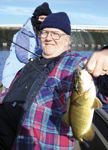
Figure 1: Fall fishing at St. Cloud Minnesota with daughter Kelly in the background.
Shortly after starting at Minnesota in 1977, I decided that it would be very helpful if there were an organization in the area similar to the Chromatography Forum of the Delaware Valley. Based upon discussions with several local sales representatives, Larry Bowers (my former graduate student at Georgia who was already on the faculty of Minnesota's Medical School) and I identified a group of local chromatography "gurus." These included Prof. Mark Brenner of the Department of Horticulture (afterwards dean of the graduate school at Minnesota); Don Hagen of 3M, a real leader in the area and subsequently a great friend; Larry Bell, an independent tech representative; and a number of others. We met at a bar near campus called the "Improper Fraction" on St. Patrick's Day 1978 (see Figure 2). The Minnesota Chromatography Forum (MCF) was the result of that lunch meeting. And while the Improper Fraction is no longer with us, the MCF just celebrated its 30th anniversary (Figure 3).

Figure 2: First Minnesota Chromatography Forum Spring Symposium with Les Ettre, Walt Jennings, and founding fathers of MCF.
One of the MCF's earliest invited speakers was Les Ettre of Perkin-Elmer, a pioneer of capillary GC (Figure 2). He reminded us that a University of Minnesota faculty member, Leroy Sheldon Palmer, was the first American to use chromatography in his research work. So Les suggested that we institute an award in Palmer's name (Figure 3).
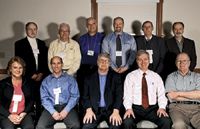
Figure 3: Reunion of Palmer Award Winners 2010 (30th Anniversary).
During a subsequent visit, Les wanted to document various aspects of Palmer's life. So Don Hagen and I took him to Palmer's grave site so he could photograph it. Unfortunately, the in-ground marker was covered with dirt and overgrown with grass. We cleaned it off and shined it up by pouring some of Don's coffee on it. It was surreal.
Over the years, MCF meetings gave me the chance to get to know some of the really great contributors to chromatography, including Csaba Horvath, Georges Guiochon, Lloyd Snyder, Al Zlatkis, Jack Kirkland, Klaus Unger, and many others who would be very well known to the readers of LCGC.
One of the great experiences of my life was my involvement with HPLC 1994 which was held in the Twin Cities. Due to a heart attack in 1993, Larry Bowers, the co-organizer, did all of the heavy lifting and of organizing and running the conference which despite a slow economy was very successful. He did a magnificent job. We both gained the experience of working with the best chromatographers and separation scientists in the world (Figure 4).

Figure 4: Visitors during HPLC 1994 (Jack Kirkland and Csaba Horvath).
As I said, my real introduction to chromatography was through my teaching, but when I shifted my research into chromatography, I spent a lot of time with Cal Giddings' Dynamics of Chromatography (5), Lloyd Snyder's monograph on adsorption chromatography (6), and Karger, Horvath, and Snyder's famous Introduction to Separation Science. In terms of LC, Snyder and Kirkland's classic Modern Liquid Chromatography was essential, along with the five wonderful volumes of Horvath's Advances and Perspectives in High Performance Liquid Chromatography. During my early days at Minnesota, my group had a series of all-day Saturday meetings in which we systematically reviewed Horvath's encyclopedic work. These weekly sessions were immediately christened "Csabathons" by an irrepressibly irreverent graduate student who shall remain nameless to protect her identity.
Over the years, our various LC instruments and computers have acquired relevant nicknames such as "Lloyd," "Csaba," "Barry," and "Georges" (though one year we had a rebellious student who named his instrument "Homer" after his favorite Simpsons character).
I had always been a believer in reading broadly in the chemical literature, and this inevitably led me to Mort Kamlet and Bob Taft's work on the physical organic chemistry of solvation. It is self-evident that chromatographers should be interested in solvation processes. For me, the result was a major series of papers with Mort, Bob, and Mike Abraham combining chromatography with physical organic chemistry (7) and the chemical engineering of fluid phase equilibria (especially through the work on solubility parameters by Chuck Eckert of Georgia Tech).
Without doubt, Lloyd Snyder and Csaba Horvath have had an immense impact on my career and work in chromatography. There are too many stories to tell about Lloyd and Csaba individually, so I will tell one involving both.

Figure 5: Attendees at the Lloyd Snyder Celebration in 2001 prior to Maastrich meeting of HPLC 2001 organized by John Dorsey and Elsevier.
For many years, Lloyd was the Journal of Chromatography's chief U.S. editor for liquid chromatography. So when he retired shortly before the Maastricht meeting of the International Conference on Column Liquid Chromatography (2001), Elsevier and John Dorsey, the incoming editor, sponsored a symposium just before the ICLC to honor Lloyd (Figure 5). It was a marvelous event, and many of Lloyd's friends participated, including Csaba, whom I had the privilege of introducing. Now, only a month earlier I had introduced Csaba as the keynote speaker at the annual MCF spring symposium. So I already had a very elaborate introduction with slides detailing Csaba's many seminal contributions. But because everyone at Lloyd's symposium knew Csaba personally, I saw no point in a formal lengthy introduction. Instead, after lunch I stood up and said, "I have always wanted to do this." Then, mustering my best Ed McMahon interpretation, I shouted, "Heeeere's Csaba!" The Americans in the audience, including Csaba, got quite a kick out of my salute. However, at the break after Csaba's talk, Hans Poppe, not understanding my homage by comparing Csaba to Johnny Carson, started to reprove me for disrespecting Csaba. Fortunately, Peter Schoenmakers, who had worked for several years at Shell in the U.S. and was a close friend and associate of Hans', intervened and politely explained that I was indeed saluting Csaba and treating him as a first-name-only celebrity, not demeaning him. Subsequently Hans and his wife gave me a lift to Amsterdam. Lloyd and others warned me that Hans liked to drive fast. It was a hair-raising trip.
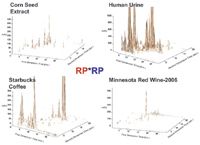
Figure 6: 2D LC traces of various complex materials.
In many ways, my current research in fast LC×LC is the outgrowth of an interest, born in the late 1980s, in stable stationary phases and a long-standing interest in chemical selectivity and phase transfer thermodynamics (see Figures 6 and 7). If, as someone once said, all chemists can be divided into two classes, thermodynamicists and kineticists, I am wholeheartedly and unabashedly a thermodynamicist.
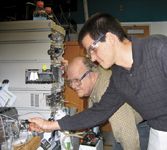
Figure 7: Pete Carr and Dwight Stoll examining a 2D LC system.
Chromatography — the research and the interactions with the hundreds of colleagues, graduate students, and collaborators whom I have met because of it — has been immensely stimulating and, yes, fun. I hope my students and I have contributed something to both its theory and practice.
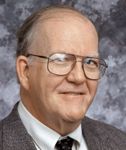
Peter W. Carr Peter W. Carr received his B.S. in Chemistry (1965) from the Polytechnic Institute of Brooklyn, where he worked with Professor Louis Meites, and a Ph.D. in Analytical Chemistry at Pennsylvania State University (1969) under the guidance of Professor Joseph Jordan. He was a research assistant and associate at Brookhaven National Laboratory during the summers of 1965 and 1966 and a postdoctoral associate with David Glick at Stanford University Medical School (1968). From 1969 until 1977, he was with the University of Georgia (Athens).
In 1977, he joined the University of Minnesota, where he became Professor of Chemistry in 1981. He has won numerous awards including the Eastern Analytical Award in Separation Science, the Dal Nogare Award of the Chromatography Forum of the Delaware Valley, and the ACS (Supelco) Award in Chromatography. Most recently he was awarded the Horvath Medal and the Martin Medal.
References
(1) M.W. Watson and P.W. Carr, Anal. Chem. 51, 1835–1842 (1979)
(2) S.N. Deming and S.L. Morgan, Anal. Chem. 45, 278A–283A (1973).
(3) S.G. Weber and P.W. Carr, "The Theory of the Dynamics of Liquid Chromatography," in High Performance Liquid Chromatography, P.R. Brown and R.A. Hartwick, Eds., Chemical Analysis: A Series of Monographs on Analytical Chemistry and Its Applications, Vol. 98, Ch. 1 (John Wiley and Sons, Inc., Hoboken, New Jersey, 1989), pp. 1–115.
(4) G.E.F Lundell, Industrial and Engineering Chemistry (Analytical Edition), 5, 221–2251 (1933).
(5) J.C. Giddings Dynamics of Chromatography, Vol 1 of Chromatographic Science (Marcel Dekker, Inc., New York, New York, 1965).
(6) L.R. Snyder Principles of Adsorption Chromatography, Vol. 3 of Chromatographic Science, (Marcel Dekker, Inc., New York, New York, 1965).
(7) M.J. Kamlet, P.W. Carr, R.W. Taft, and M.H. Abraham, J. Am. Chem. Soc. 103, 6062–6066 (1981).
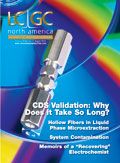
Detecting Hyper-Fast Chromatographic Peaks Using Ion Mobility Spectrometry
May 6th 2025Ion mobility spectrometers can detect trace compounds quickly, though they can face various issues with detecting certain peaks. University of Hannover scientists created a new system for resolving hyper-fast gas chromatography (GC) peaks.
Altering Capillary Gas Chromatography Systems Using Silicon Pneumatic Microvalves
May 5th 2025Many multi-column gas chromatography systems use two-position multi-port switching valves, which can suffer from delays in valve switching. Shimadzu researchers aimed to create a new sampling and switching module for these systems.
New Method Explored for the Detection of CECs in Crops Irrigated with Contaminated Water
April 30th 2025This new study presents a validated QuEChERS–LC-MS/MS method for detecting eight persistent, mobile, and toxic substances in escarole, tomatoes, and tomato leaves irrigated with contaminated water.

.png&w=3840&q=75)

.png&w=3840&q=75)



.png&w=3840&q=75)



.png&w=3840&q=75)










